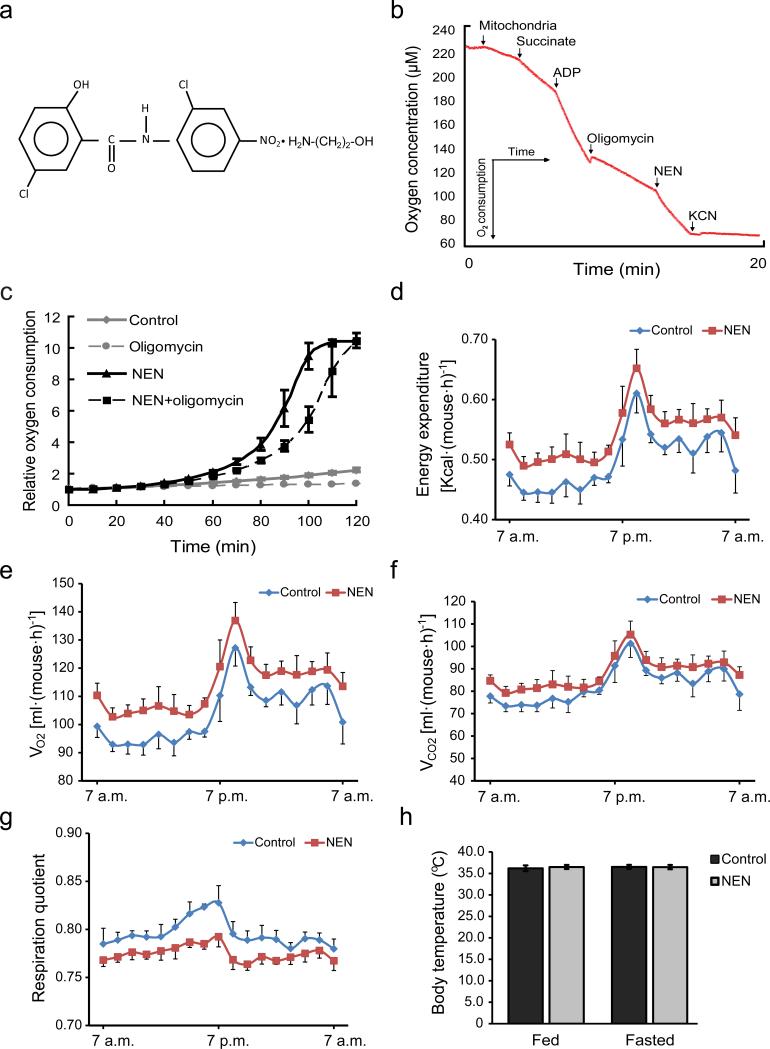Figure 1.
NEN uncouples mitochondrial respiration and impacts on mouse energy metabolism. (a) Chemical structure of niclosamide ethanolamine salt (NEN, 5-chloro-salicyl-(2-chloro-4-nitro) anilide 2-aminoethanol salt). (b) Oxygen consumption assay of isolated mouse liver mitochondria, showing oxygen concentration continuously measured as the indicated respiration substrates and inhibitors added into the respiration system to the final concentrations: succinate, 5 mM; ADP, 125 nM; oligomycin, 5 μg·ml−1, NEN, 1 μM; KCN, 2 mM. (c) Cellular oxygen consumption assay of NIH-3T3 cells treated with vehicle (Control), 1 μM NEN (NEN), 5 μg·ml−1 oligomycin (Oligomycin), or both (NEN + oligomycin). (d) Mouse energy expenditure, p=0.01. (e) Mouse oxygen consumption (VO2), p<0.01. (f) Mouse carbon dioxide generation (VCO2), p=0.05. (g) Mouse respiration quotient, p < 0.001. (h) Mouse rectal temperature. For d, e, f, g and h, male C57BL/6 mice were fed with HFD (control) or same HFD with 1,500 ppm NEN (NEN) for 1 wk, n = 8 for all groups. Statistical test in d, e, f and g, one-way analysis of variance (ANOVA); in h, student t-test.

